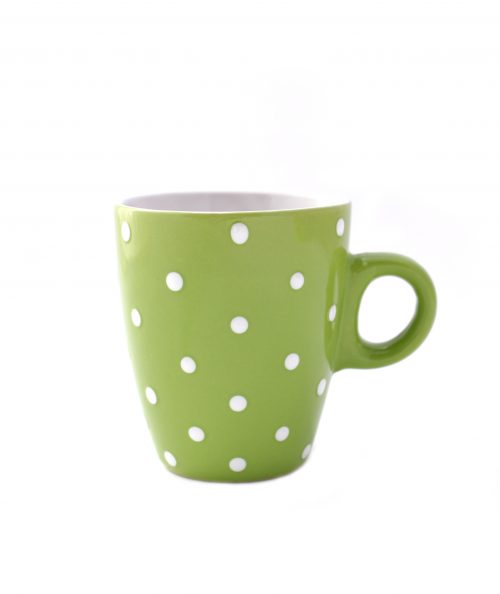
Reaching for your favourite hot drink may add extra kilojoules to your diet without you even realising. Nutritionist Zoe Wilson and Larina Robinson reveal what’s really in your cuppa.
Coffee
What’s in it? Coffee beans — Arabica, Robusta or a blend of both. Mochas and flavoured coffees also contain a combination of added sugar, flavours, colours, food acids and preservatives.
Caffeine content: A regular cup of coffee typically contains around 100mg caffeine, however the caffeine content varies according to the type of bean and roasting method used. A shot of espresso (40ml) has around 80mg caffeine while a 250ml cup of percolated coffee has 60-120mg and instant coffee around 60-80mg.
Benefits: Coffee helps increase alertness and concentration, temporarily boosts your metabolism and may increase the duration/intensity of a workout. Research has also shown coffee may have other health benefits such as reducing the risk of stroke.
What to avoid: Too much caffeine can affect your nervous system, leading to anxiety, irritability, headaches and the shakes. Caffeine is also addictive so consuming it in high doses (more than 600mg a day) can result in physical dependence. Caffeine can affect your sleep quality so it’s best to avoid it late in the day. Also watch out for added kilojoules and fat from milk, sugars and/or syrups.
Nutrition information: Black coffee: 25kJ. Adding sugar, milk, flavoured syrups and whipped cream increases the energy.
Our verdict: Your daily coffee poses no cause for concern and can actually benefit your health — just aim for less than 400mg caffeine a day in total or less if you are sensitive to caffeine. Remember to opt for trim milk, forego the extra sugars, stick to a short/regular size cup, and save coffees with added extras for special occasions.
Milo/malt drinks
What’s in it? Varies by brand, but they typically contain malted barley and wheat extract, milk solids, sugar, cocoa, maltodextrin, vitamins, minerals and emulsifiers.
Benefits: Fortified with vitamins and minerals, these beverages are a nutritious alternative to hot chocolate. When made with trim milk, they also contain protein.
What to avoid: Adding extra heaped teaspoons! These drinks are not low in kilojoules, so stick to the recommended serving sizes and use trim milk.
Nutrition information: Per serve (3 level teaspoons, no milk added): 260kJ, 1.5g fat, 7g sugar. They may also be fortified with vitamins and minerals.
Our verdict: Nutritious if you stick to trim milk and the recommended serving sizes.
Tea
What’s in it? Tea leaves. All non-herbal tea comes from the same plant — the difference is in the production method. White and green varieties are unfermented, oolong is semi-fermented and black tea leaves are fully fermented during processing.
Caffeine content: White and green tea contain lower amounts of caffeine than black tea. A 250ml cup of black tea contains 10-50mg caffeine, depending on brewing time.
Benefits: Tea contains antioxidant polyphenols, with the highest concentration found in green and white varieties. Research suggests tea may reduce the risk of cardiovascular disease.
What to avoid: Drinking multiple cups of tea in a day, especially black tea, could increase your caffeine intake without you realising it.
Nutrition information: Tea without sugar and milk: 5kJ.
Our verdict: Drinking tea is a great way to increase your daily fluid intake while also boosting the antioxidants in your diet.
Herbal tea (black, green, oolong, white)
What’s in it? There are many varieties based on flowers, herbs, leaves, flavours and spices. Common examples include lemon and honey, ginger and lemongrass, rooibos, peppermint, chamomile, fruit medleys and chai.
Caffeine content: Most herbal teas are caffeine-free unless based on black or green tea. Check the label (or ask your barista) first if you are watching your caffeine intake.
What to avoid: Some herbs, such as St. John’s Wort, used in tea blends may interfere with certain medications. Check with your doctor if you are concerned.
Nutrition information: Average herbal tea: 15kJ, 0g sugar. Trim chai tea latté (short): 489kJ 23g sugar. Be mindful when ordering chai tea lattés as many are made based on a syrup, adding sugar and kilojoules.
Our verdict: Herbal teas boast a range of health benefits and are suitable for any time of day. The varieties are endless and most flavours actually taste better without milk or sweeteners.
Hot chocolate
What’s in it? Varies from brand to brand, but hot chocolate powders typically contain sugar, cocoa, milk solids, an anti-caking agent and flavours.
Benefits: When mixed with trim milk, it’s a delicious way to boost your calcium intake. Plus there are some sugar-free varieties so it can cure a chocolate craving without an overload of kilojoules.
What to avoid: Adding extra kilojoules through marshmallows and whipped cream. The powders also typically contain milk solids and/or soy so check the labels if are allergic or you have an intolerance.
Nutrition information: Three level teaspoons hot chocolate powder: 110kJ, 5g sugar.
Our verdict: Water-based varieties are a good low-energy choice. Avoid extra-large sizes, choose trim milk and save the extra toppings for an occasional treat.
www.healthyfood.com










